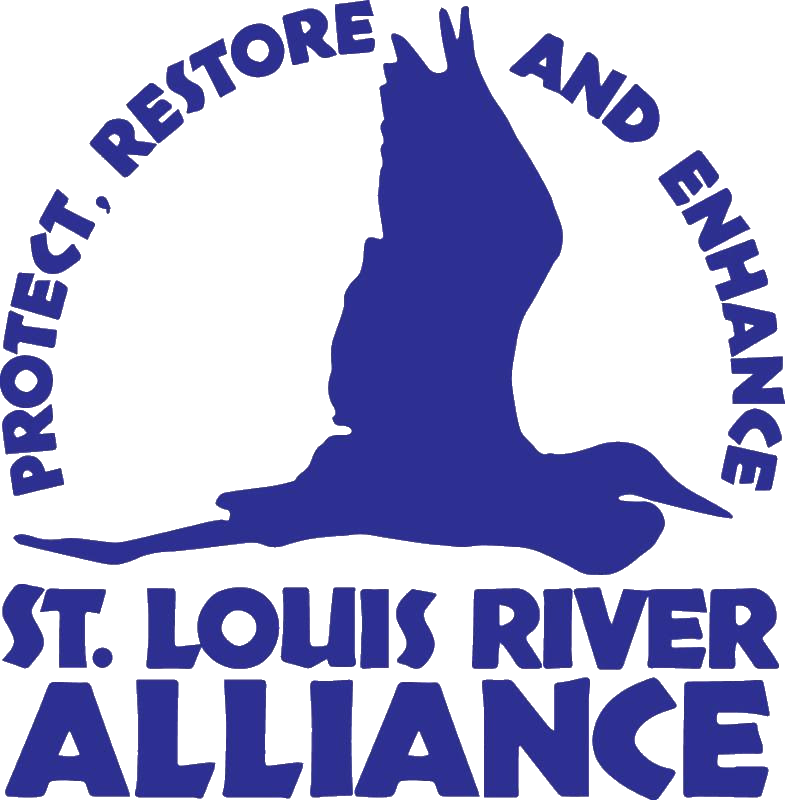Paddling Through Restoration: A Look at the Allouez Bay Marsh Bird Habitat Project
Project partners paddling in Allouez Bay to assess how mechanical cattail removal and native seeds were progressing, and identify next steps for the Allouez Bay Marsh Bird Habitat Project.
On Tuesday, August 5, the St. Louis River Alliance had the opportunity to join fellow partners on a paddle through the Allouez Bay Marsh Bird Habitat Project in Superior, Wisconsin. This unique on-the-water experience allowed us to witness the early progress of an ambitious wetland restoration effort aimed at revitalizing one of the region’s critical coastal marsh ecosystems. You can learn more about the project here.
Launched in 2024, the project is focused on restoring ecological balance to Allouez Bay by addressing the spread of invasive hybrid cattails. These fast-growing plants form dense monocultures that outcompete native wetland vegetation, degrade habitat diversity, and reduce the suitability of the marsh for a wide range of wildlife—especially birds that depend on varied water depths and plant types for feeding, nesting, and shelter.
Wading through dense cattail.
Exploring the habitat mounds and shallow potholes that have been created to attract and support marsh bird species.
To restore semi-marsh habitat, mechanical methods were used in August/September 2024 to remove invasive cattails, a process that opens up the marsh and helps reintroduce natural hydrology. Following this, native seeds were planted. This habitat type—characterized by a mix of open water, emergent plants, and higher ground—is essential for marsh-dependent species.
During the site visit, project partners assessed how the seeding is progressing and identified next steps to build on the restoration work completed so far. We were excited to see native plants beginning to emerge and were especially impressed by the habitat mounds and shallow potholes that have been created throughout the site. These features are designed to attract and support a wide variety of marsh bird species, including the American Bittern, Least Bittern, Marsh Wren, Sedge Wren, and Swamp Sparrow.
Tasting invasive cattail - there are so many uses for these plants!
Of course, no restoration paddle would be complete without a bit of fun—yes, some of us even sampled cattails! More importantly, the day gave us a hands-on look at the transformative potential of well-planned, science-based restoration.
This effort is being led by the Wisconsin Department of Natural Resources and Audubon Great Lakes, with key contributions from Wren Works, the Minnesota Department of Natural Resources, the Fond du Lac Band of Lake Superior Chippewa, Lake Superior Reserve, and the Lake Superior Research Institute. The St. Louis River Alliance is proud to be part of this collaborative team and will be supporting the project’s next phases by helping connect local communities to the restoration work through outreach and engagement events. We are also in the process of creating a project webpage and will share more details soon!
Healthy wetlands don’t just benefit wildlife—they also support cleaner water, reduce flooding, and improve climate resilience. Projects like this one highlight the power of partnership and long-term stewardship.
If you're interested in staying informed about this and other local conservation efforts, we invite you to sign up for our newsletter at www.stlouisriver.org/enewsletter.




